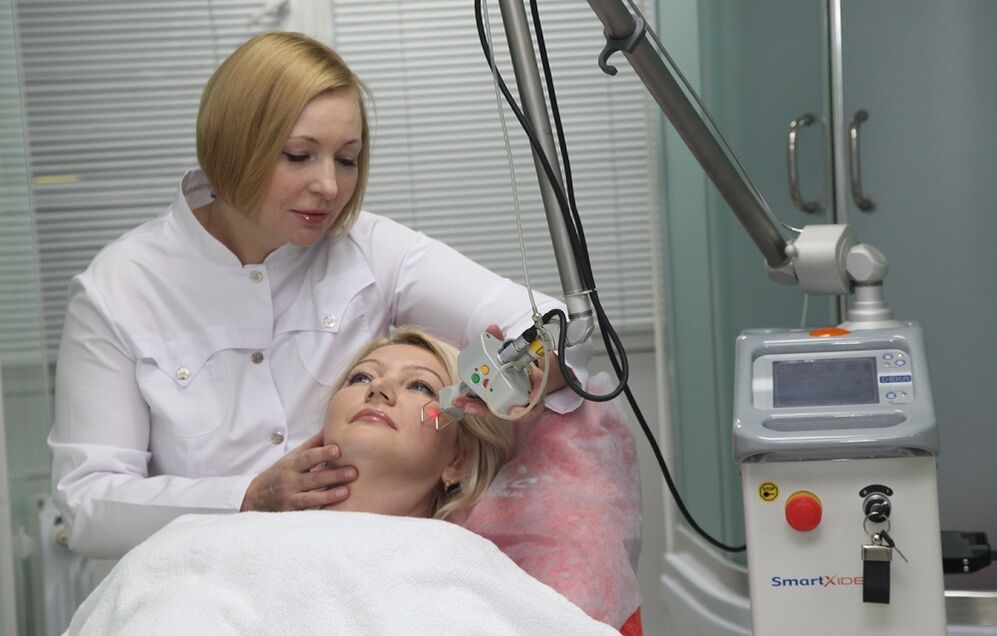Every woman wants to be the owner of perfectly smooth and youthful skin without a single wrinkle. Over the years, the aging process of the skin becomes more and more active, due to which it rapidly loses its elasticity and firmness. Fractional laser resurfacing will help restore skin quality. Thermal exposure during the procedure activates cell growth, ensures the production of collagen fibers and the removal of the dead skin layer.
Operating principle
Fractional laser resurfacing: what is it? This is what experts call skin rejuvenation through the use of high temperatures provided by a laser beam. The principle of operation of the technique resembles laser resurfacing, but has a deeper effect and possible complex consequences. The apparatus for the procedure is small in size, it is equipped with photocells that ensure the penetration of the laser beam into the tissues. The specialist drives the device on the patient's skin very quickly, otherwise burns may occur.
Types
Specialists distinguish between ablative and non-ablative types of fractional laser resurfacing. Ideally, a combination of both types of exposure is recommended.
ablative type
An ablative non-surgical facelift helps resurface the dead layer of skin cells. This option allows you to remove the first signs of aging. The procedure, acting on the skin, activates the growth of new healthy cells, tightens, evens skin tone, smoothes mimic wrinkles.
non-ablative type
A non-ablative type of laser resurfacing is used in case of irreversible skin changes. This option allows you to influence the deep layers, eliminates pathological processes in the skin, promotes cell regeneration and the formation of a membrane framework, activates the production of collagen fibers.
Indications
- Sagging, loose skin;
- The presence of pigmentation, acne, enlarged pores;
- The presence of scars, rosacea (spider veins), stretch marks (striae);
- The presence of facial wrinkles, "crow's feet" around the eyes.
Contraindications
Experts do not recommend laser resurfacing in the following cases:
- The presence of allergic reactions, skin infections;
- The presence of inflammation in the area of the planned impact, psoriasis;
- Epilepsy;
- The presence of malignant tumors in the area of the intended impact.
preparation period
Before fractional rejuvenation, it is necessary to stop:
- A course of antibiotic treatment based on tetracyclines;
- Use of cosmetics containing alcohol;
- Visiting beaches, solariums (refusal to sunbathe a few weeks before the procedure).
How is it done

All manipulations within the framework of laser resurfacing are performed under local anesthesia. During the procedure, the patient may experience discomfort. The whole process takes about half an hour.
During the operation of the device, special protective glasses are put on in front of the patient's eyes. Remember: the level of exposure and intensity of the procedure is selected by a specialist individually for each patient. The course mainly consists of 7 sessions. This is enough to smooth even deep scars and remove most wrinkles.
effects
Immediately after fractional rejuvenation, the patient experiences pain even with the use of pain relievers and medications. After about 3 hours, the skin becomes red and slightly swollen (swelling is maximal on the 2nd day), especially in the area of the nose, around the eyes and on the upper eyelids. To reduce swelling, you need to take diuretics and reduce the amount of salty foods.
On the second day, copious secretion of ichor and the appearance of a crust on the face, which hardens by the end of the day (it is forbidden to touch it, as well as try to remove it, it is fraught with infections and the appearance of scars). After a while, it will become softer and disappear on its own (use of skin regeneration products will help with this).
After about a week, the swelling on the face stops, but for about a month, a pronounced pinkish tint remains on the skin. When going outside, the use of compounds with sun protection factor (at least SPF 30) is required, the intake of vitamins is recommended. Sunbathing is prohibited, as well as the use of exfoliants (scrub, peeling, gommage).
Usually, after 3-6 months, the specialist prescribes a second session, and all the consequences will have to be transferred again.
























